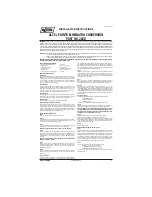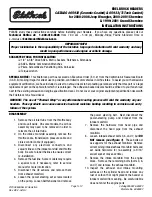
• Even if there is a malfunction to the
brake operation of the AEB, when
you depress the brake pedal, the
brake operates normally. AEB
brake operation does not operate
in certain hazardous situations.
• The AEB is designed to function
above approximately 8 km/h (5
mph) and below approximately 180
km/h (110 mph).
• The AEB does not detect:
- Persons or animals.
- Oncoming vehicles in the oppo-
site lane or a vehicle in an inter-
section.
- Stopped objects.
• The AEB cannot detect objects,
when:
- The sensors are covered with
dirt.
- There is heavy rain or heavy
snow.
- There is interference by electro-
magnetic waves.
- There are strong radar reflec-
tions.
- Driving in a curve.
- Driving uphill or downhill.
- Driving in areas under construc-
tion.
- An object ahead is very narrow
such as motorcycles or bicycles.
- A vehicle suddenly enters your
lane.
- The camera cannot secure a
clear view.
- The camera cannot catch the
whole vehicle.
- An unusual shape vehicle is
ahead such as a trailer, special
access vehicle or a truck with
unique shaped cargo.
- Driving at night, the tail lamp of
the vehicle ahead is missing,
installed on an unusual place or
installed unevenly.
- Coming in or out a tunnel, where
the illumination intensity is high.
Driving your v
ehicle
5
5-53
Autonomous Emergency
Braking ("AEB")
Limitations
The AEB system is a supple-
mental system and is not a sub-
stitute for safe driving prac-
tices. It is the responsibility of
the driver to always check the
speed and distance to the vehi-
cle ahead to ensure it is safety
to use the AEB system.
WARNING
KH CAN (ENG) 5:2015 3/25/2015 10:52 AM Page 53
















































